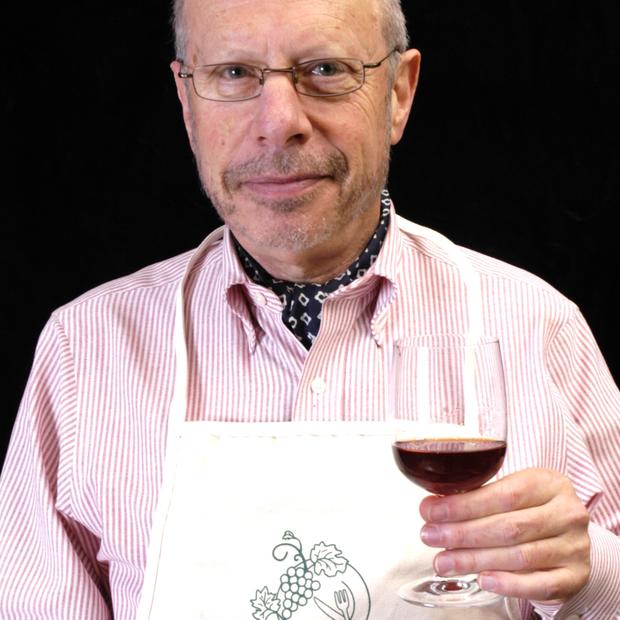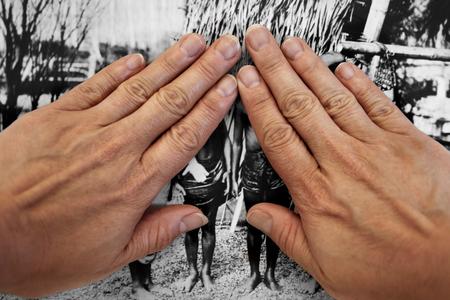Editor's Note: This is an excerpt from Ron Holden's new book, Home Grown Seattle: 101 True Tales of Local Food & Drink.
Who are the half-dozen people who embody and represent Seattle food? Pasqualina Verdi, the welcoming earth mother, arms outstretched behind a table of produce, or Victor Steinbrueck, the architect whose Market Sketchbook galvanized the city to save the Pike Place Market? Victor Rosellini, the courtly restaurateur who launched the city's fine dining? Mark and Brian Canlis, who reinvented their grandfather's restaurant for the 21st Century? Tom Douglas? Ethan Stowell? The puckish Ivar Haglund? Howard Schultz, who sits astride the Starbucks colossus? Jon Rowley, who preaches the gospel of perfect oysters, Copper River salmon, and ideal peaches? All of them, certainly, would be on the short list. But there is one person who stands out.
If Seattle is known in the world as more than a rainy, medium-sized fishing port, if it is known today for its coffee, its beer, its wine, its cornucopia of fresh food and its inventive restaurants (not to mention its airplanes, computers, and online shopping), that reputation is due to one man above all. His name is Gordon Bowker.
He is the creator of two iconic Seattle brands—Starbucks and Red Hook—but, modest and shy, he shuns the spotlight.
****
The Starbucks story begins with a defining moment, not widely told. Bowker had grown up in Ballard, graduated from O'Dea, enrolled at the University of San Francisco, dropped out. He bummed around Europe, where he acquired a taste for English beer and, it turned out, Italian espresso.
The year was 1962 and Bowker was in Italy. In Rome one afternoon, he took a seat at a caffè around the corner from the Trevi Fountain; the tourists were studying guidebooks like Baedecker, Frommer and Michelin, the locals were reading La Stampa and La Corriere della Sera. Bowker began reading his copy of the Rome Daily American. He ordered a cappuccino from the waiter and began catching up on the news: a new Pope (who would soon convene Vatican II), nuclear tests in the South Pacific, civil rights demonstrations in the American South, discontent in Algeria, strife in Vietnam, revolution in Cuba. In Liverpool, England, a little-known band called the Beatles hired a new drummer, a genial fellow named Ringo.
 “Ecco, signore.” Bowker took a sip of the cappuccino, and wow!
“Ecco, signore.” Bowker took a sip of the cappuccino, and wow!
His exposure to coffee had been, up to that point, typical of American college students: a warm brown stimulant that fueled all-nighters. This was different. This was good. This was amazing. This was unforgettable. This was worth making a resolution: In the future, when he could afford it, he would drink coffee like this.
It would take less than a decade. Back in Seattle, Bowker worked at a string of odd jobs. He was a tour guide for Bill Speidel's Underground Tours (where two of his colleagues were Mick McHugh and Tim Firnstahl). He began writing film scripts for King Screen Productions and freelancing for the original Seattle Magazine, published by King Broadcasting. He became, also, an evangelist for better coffee.
Once a month or so, he would drive his green Alfa Romeo to Vancouver, BC, to feed his coffee habit at a shop called Murchie's which roasted and sold its own coffee beans. Bowker's passion for good coffee, when most of America was drinking Maxwell House, had become known; he converted many friends to the pleasure of coffee made from freshly roasted beans. And one day, returning from a bean-buying expedition to Vancouver, for himself and his friends, his little Alfa filled with the aroma of the coffee beans in the trunk, he had his second coffee epiphany: “Why not roast our own beans?”
And the next thing you know, Bowker and his roommates, Jerry Baldwin and Zev Siegl, had started their own coffee company. They named it Starbucks, in honor of Mister Starbuck, the coffee-loving mate on the Pequod, whose captain Ahab was always on the lookout for the elusive white whale, Moby Dick. They began making pilgrimages to the Bay Area to learn about roasting from a Dutchman named Alfred Peet, who had worked for Twinings in London and ran a small coffee company in Berkeley.
The first Starbucks store, at the corner of Western & Virginia, also sold tea and spices, as well as coffee machines and accessories. (The so-called “original” store on Pike Place wasn't opened until 1976.) To convince customers that their strong coffee tasted as good as it smelled, they gave away free samples. Predictably, critics complained that Starbucks was “over-roasted” and “burned,” ignorant carping that continues to this day. It was not until several years later that Starbucks opened a retail store (at 4th & Spring) that offered coffee drinks.
In the early 1980s, Bowker and his partners hired a brash young salesman from New York to help with marketing. His name was Howard Schultz, and he would eventually buy their company.
Meantime, Bowker and a graphic designer, Terry Heckler, who doodled the original Starbucks mermaid logo, teamed up to start an ad agency, Heckler Bowker, that created some of television's most memorable advertising for clients like Rainier beer, and brand development for a fledgling winery called Ste. Michelle. Their retail consultant was J'Amy Owens, currently CEO of Bill the Butcher.
****
Fast-forward to the Red Hook story. Bowker knew Paul Shipman from his work on the Ste. Michelle account. As the most junior guy in the top-heavy executive suite, Shipman had an MBA and a fancy title (“Ste. Michelle Brand Manager”), but ended up with all the crappy assignments. Bowker had an idea for a craft brewery, unheard of in those days. One banker responded by saying, “Breweries don't start up, they shut down.” (Says Bowker: “That's when I knew I was on to something.”) Still, he realized that he knew nothing about actually running a brewery. So, over dinner at Adriatica, he pitched his idea to Shipman, who immediately replied, “I want to be the president of Red Hook.”
They launched their brewery out of a machine shop in Ballard, and it created a sensation, though not in a good way. Only 15 percent of the people who tried Red Hook loved it, 85 percent couldn't stand it. Hated it. “Banana beer,” they called it. And they were right. But the Red Hook folks stood firm. Even the slightest compromise, they told detractors at the time, was the first step on a slippery slope that would lead directly to lawnmower beer. Red Hook had its enthusiastic supporters, of course, the vocal minority that drank more flavorful beers from imported bottles. And they loved it on draught in Alaska, especially.
On the technical side, the problem was quickly identified as a quirky strain of yeast that had the disconcerting side effect of generating the same esters found in bananas. Within a few months, a Christmas ale called Winterhook was brewed using a new strain of yeast; this time it found near-universal favor. The Winterhook recipe was renamed “Extra Special Bitter,” ESB for short, and by springtime Red Hook ESB was the brewery's flagship.
“Where we made our mistake was trying to get the product out too quickly,” Bowker admits. “We wanted to be ready for Jake O'Shaughnessy,” the new restaurant that McHugh and Firnstahl were opening in the Hansen Baking Company on Lower Queen Anne. And with that realization, that he did not enjoy the tension and excitement of the commercial marketplace, Bowker essentially cashed out and retired.
By then, Howard Schultz, who'd left Starbucks to start his own coffee company, returned from his two-year hiatus and bought out the founders. For his part, Shipman would create an alliance with competing craft breweries and sell a third of Red Hook to the arch-enemy, Budweiser, in order to gain national distribution. And Bowker, true to his belief that creativity requires idleness, returned to his home and family. “I don't need a Gulfstream,” he says.
He made out pretty well. And yes indeed, both the coffee company and the brewery were his ideas. “I had a lot of help, but I realized 30 years ago that I didn't have to work this hard. And that just infuriates a lot of people.”


